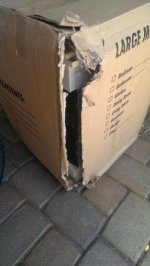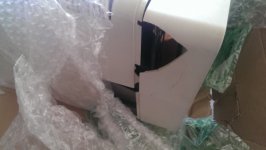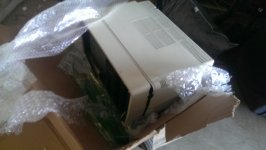k0d3g3ar
Experienced Member
Well I just took delivery of a Model 16 with 2x 8" FDDs in it. Although I'm furious with the eBay seller who literally packed this unit to be destroyed by shipping (I've got some serious case repair work to do here), I was able to get it booting and it comes up with the "Insert Disk" message nice and centered on the green screen.
However after trying about 10 different Model 16 and Model 2 boot disks with TRSDOS and CP/M, it seems that this machine is refusing to read a disk. The disk light comes on with any restart, but there isn't the familiar clunking sound of the disk arm & motor movement that I have on my Model II.
So I'm asking a general question to anyone out there who has done this.... What is the best way to diagnose an 8" FDD? I could just switch drive A & B around, but the fact is that I'll still end up with one of them that is DOA. I'd like to see if this is just a matter of an electronic repair, or possibly a seized drive arm?
Does anyone have any specific approaches they have used to repair one of these?
Myles
However after trying about 10 different Model 16 and Model 2 boot disks with TRSDOS and CP/M, it seems that this machine is refusing to read a disk. The disk light comes on with any restart, but there isn't the familiar clunking sound of the disk arm & motor movement that I have on my Model II.
So I'm asking a general question to anyone out there who has done this.... What is the best way to diagnose an 8" FDD? I could just switch drive A & B around, but the fact is that I'll still end up with one of them that is DOA. I'd like to see if this is just a matter of an electronic repair, or possibly a seized drive arm?
Does anyone have any specific approaches they have used to repair one of these?
Myles




